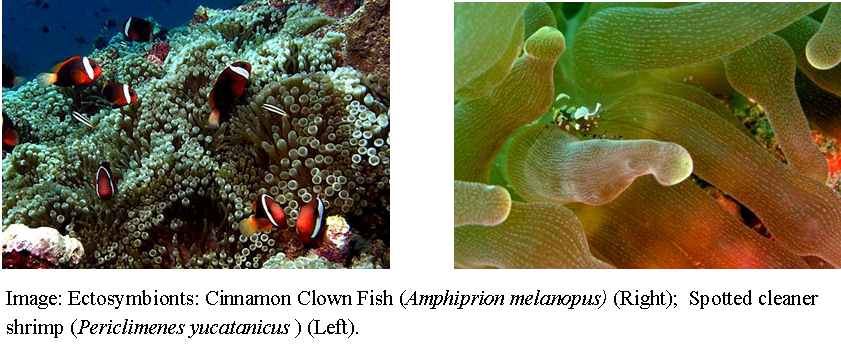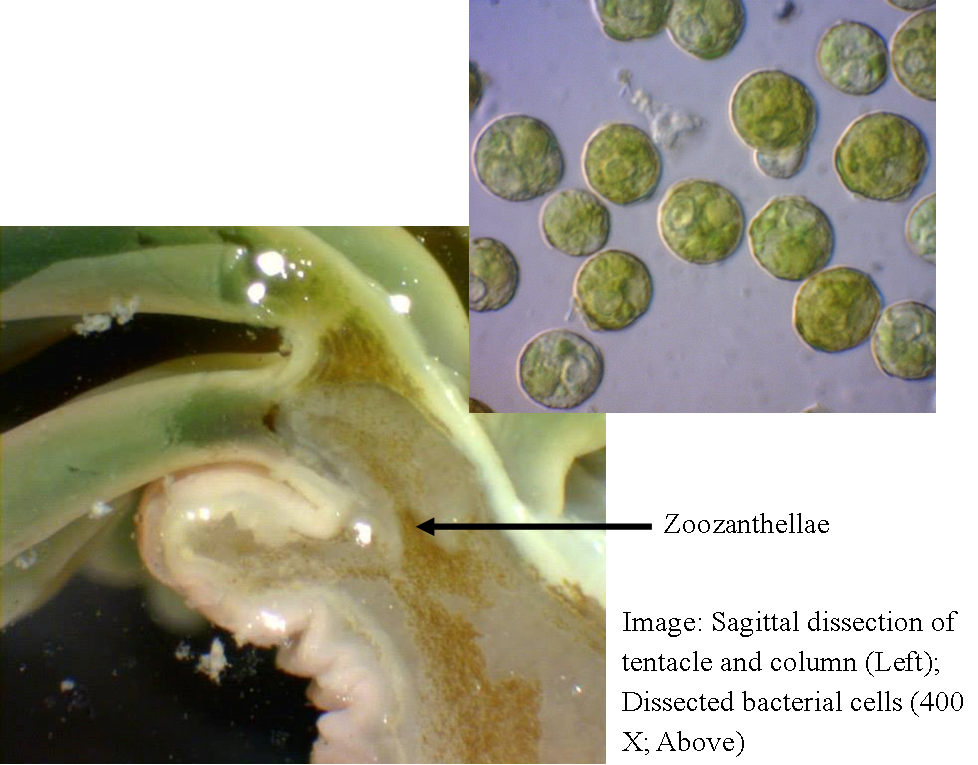Symbioses
Ectosymbionts
E. quadricolor are known to support a myriad of ectosymbionts including both shrimp including the species Periclimenes brevicarpalis and a large diversity of fish from the genus Akindynos. Specific fish species recorded in symbiosis include A. akindynos, A. allardi, A. bicinctus, A. chrysopterus, A. clarkii, A. ephippium, A. frenatus, A.mccullochi, A. melanopus (primarily clustered form), A. omanensis, A.rubrocinctus, A. tricinctus, Premnas (solitary form only) (Kansas University). All ectosymbionts have adapted to tolerate the cytolytic toxins of the anemones' mucosal tentacle lining. This mucus, fatal to other fish, therefore provides protection for the symbionts. In turn, the ectosymbionts are known to act aggressively towards anemone predators including chaetodontid butterflyfish, which prey on vulnerable expanded tentacles (Porat & Chadwick-Furman 2004).
The presence of protection afforded by large anemone fish time has been associated with increased time with tentacles expanded,
growth rate and even survival of E. quadricolor increased (Porat & Chadwick-Furman 2004). Increased expansion time occurs as anemones, usually retracted diurnally, remain expanded during the day after being stimulated in some unknown way by the presence of anemone fish (Porat & Chadwick-Furman 2003).
Expanded tentacles enable the effective capture and heterotrophic feeding on zooplankton whilst also maximizing the exposure of photosynthetic endosymbiotic
zooxanthellae to UV irradiance (Porat & Chadwick-Furman 2004). Symbiotic fish also provide nutrients directly through their feces which contains organic carbons and a valuable source of ammonia and nitrogen (Roopin & Chadwick 2009).

Endosymbionts
Endosymbiotic zooxanthellae play an important role in the trophic strategy and carbon budgeting utilized by colonial or solitary polyp morphs. The algal community sustained within E. quadricolor is diverse, including a range of species from the genus Symbiodinium (Schwarck 1999). The majority of algal cells are found in the tentacles and column walls to maximize exposure to UV irradiance (Schwarck 1999). Colonial polyps inhabiting shallower waters are exposed to higher irradiance and have a greater dependence on carbon available from algal photosynthesis. However, both solitary and colonial polyps require a heterotrophic contribution to nutrition (Schwarck 1999). Zooxanthellae cells in colonial polyps, whist equal in size and volume to solitary individuals, contained on average 3.4 times more of the photosynthetic pigment chlorophyll-a and 1.2 times more of chlorophyll-c increasing their photosynthetic activity (Schwarck 1999).
The presence of algal cells and photosynthetic pigments was confirmed in the specimens collected at Heron Island. Algal cells where visualized upon dissection of the tentacles the presence of chlorophyll pigments was identified using a spectrophotometer. A spike in absorbance of crushed tentacle supernatant was recorded at approximately 665 nm matching that expected for chlorophyll a.This major peak also had a fat tail to the right extending past 625 nm indicative of a second pigment, likely chlorophyll c unique to brown algae.

|